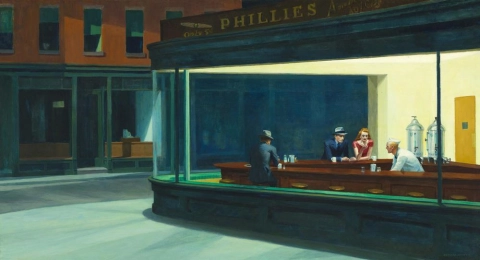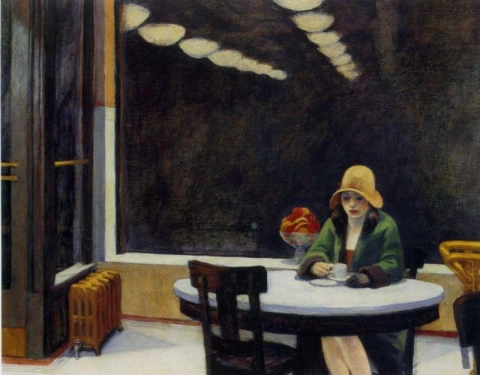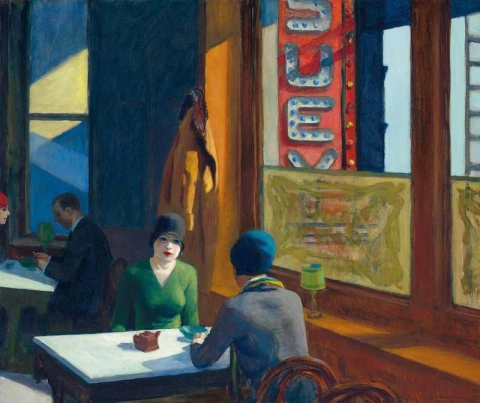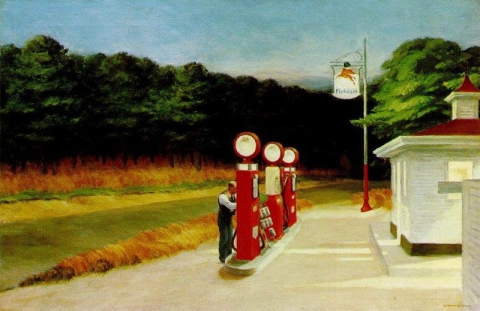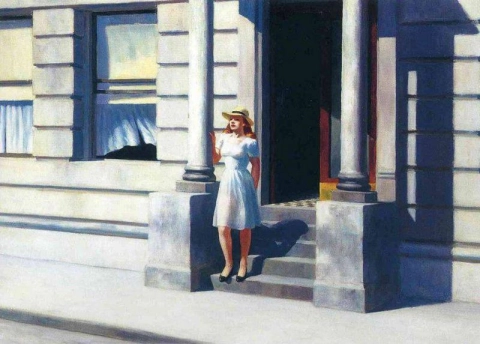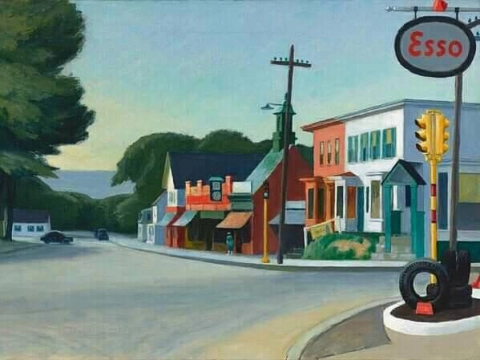

Hand painted reproductions of Edward Hopper
Edward Hopper: Capturing the Solitude of American Realism
Early Life and Artistic Evolution
Edward Hopper was born on July 22, 1882, in Nyack, New York. His early interest in drawing led him to study at the New York School of Art, where he learned under prominent artists like Robert Henri, a leader of the Ashcan School. Initially drawn to illustration, Hopper struggled to find his voice as an artist. Multiple trips to Europe, especially Paris, profoundly influenced his style, helping him transition from the influence of Impressionism to developing his unique realist approach. By the 1920s, Hopper began to create works that explored themes of isolation and modern American life, establishing himself as a major figure in American realism.
Key Works and Signature Style
Hopper's most iconic work, Nighthawks (1942), is a compelling portrayal of loneliness set in an all-night diner bathed in eerie fluorescent light. The painting captures the quiet isolation of urban life, a theme that recurs throughout his work. Other celebrated pieces, such as Automat (1927) and House by the Railroad (1925), highlight his fascination with desolate settings and solitary figures, often depicting scenes of quiet contemplation. Hopper’s style combines architectural precision with a distinct use of light and shadow, creating compositions that are hauntingly still, yet filled with emotion.
Technique and Artistic Innovations
Hopper’s approach was rooted in a realist style, using oil paints to depict scenes with meticulous detail and atmosphere. He utilized light not only to define space but to convey psychological tension, with stark contrasts between shadow and light heightening a sense of detachment. His ability to capture the interior and exterior worlds simultaneously, especially through windowed scenes, offered viewers a glimpse into private moments. Hopper also frequently employed a muted color palette, which reinforced the somber, reflective tone of his compositions. His method of isolating figures within vast spaces gave his works a cinematic quality that predated and influenced film noir.
Legacy and Enduring Influence
Edward Hopper’s impact on both American art and popular culture is profound. His explorations of solitude, alienation, and urban life continue to resonate with audiences, influencing not only visual artists but filmmakers and writers as well. His ability to evoke emotion through minimalism has inspired generations, with directors like Alfred Hitchcock and Wim Wenders citing his work as an influence. Hopper’s paintings are now part of esteemed collections, such as the Whitney Museum of American Art, and continue to be celebrated for their ability to capture the silent drama of everyday life in America.
Where to Buy Reproductions of Edward Hopper’s Work
At POD, we offer high-quality reproductions of Edward Hopper’s most evocative paintings, including Nighthawks and Automat. Perfect for art lovers who appreciate Hopper’s unique exploration of American realism, our reproductions bring the quiet power of his iconic scenes into your home. Enjoy the timeless allure of Hopper’s work with these carefully crafted reproductions.
Imagine owning an original-style painting by one of the greatest artists in history. At POD, we offer you the chance to make this dream a reality. Each canvas is faithfully reproduced down to the smallest detail, allowing you to experience the beauty of the artist’s vision in your own home.
Our reproductions are crafted by experienced painters using the finest materials and time-honored methods. We are committed to delivering works of exceptional quality that will inspire and bring joy to your family for generations to come.

